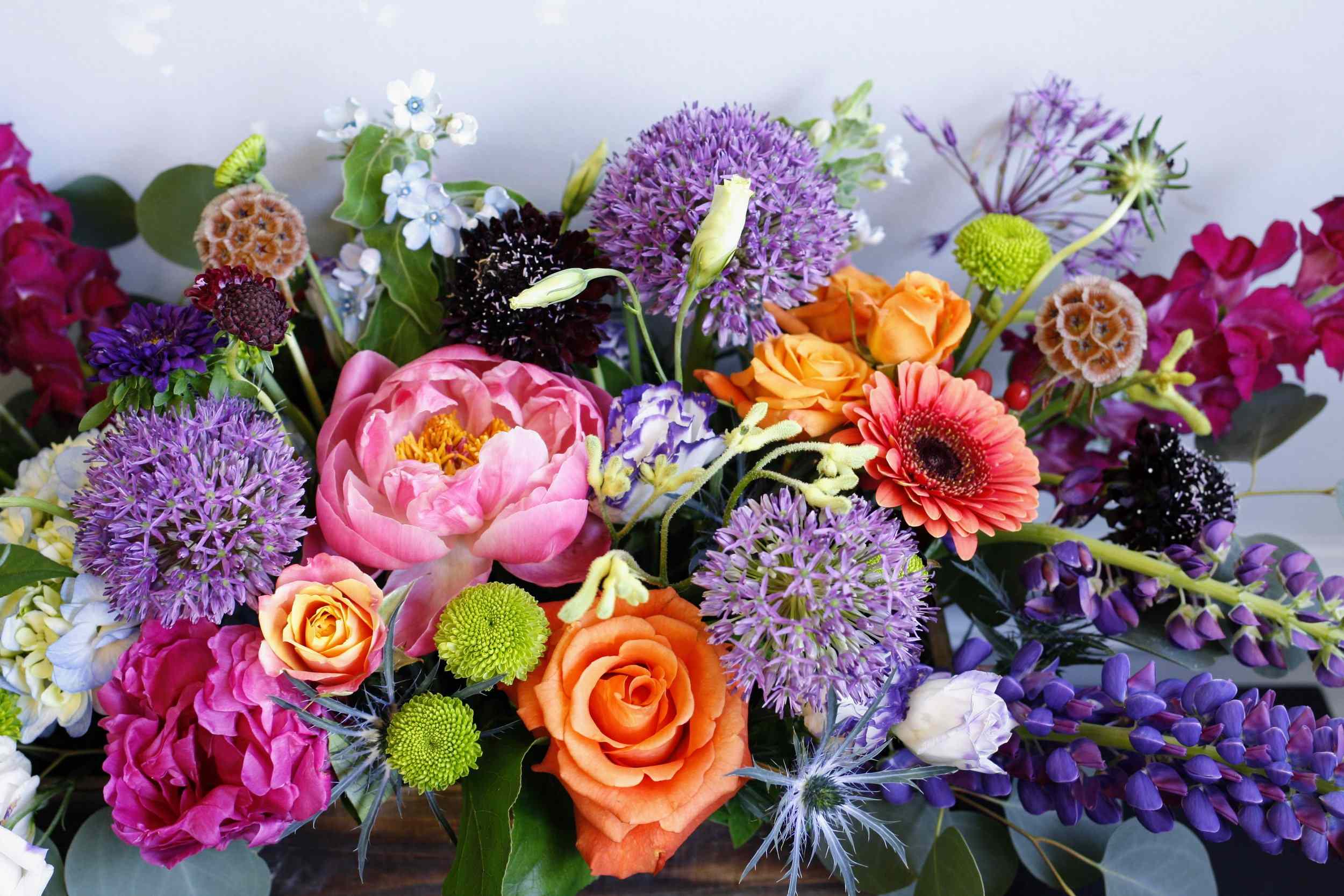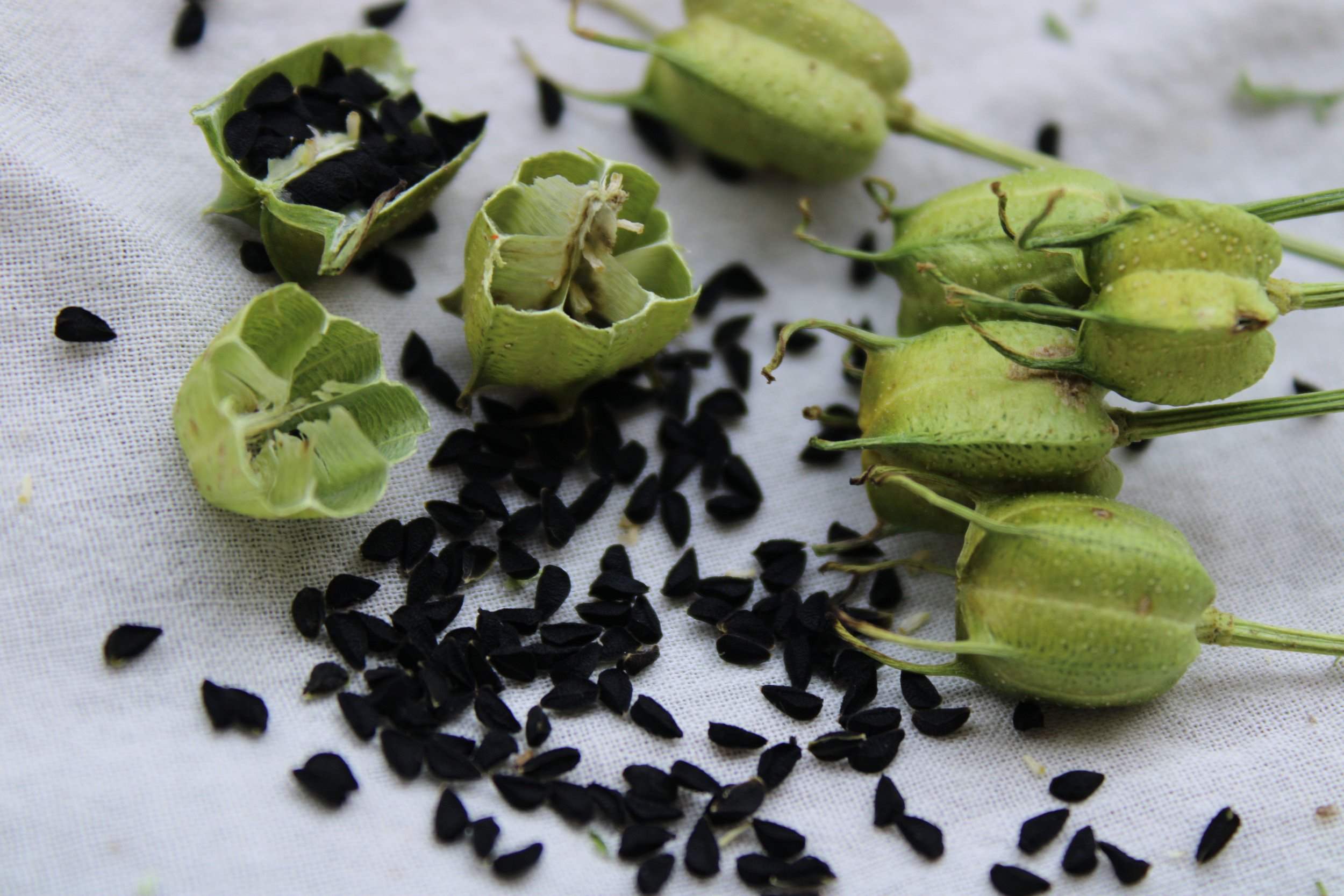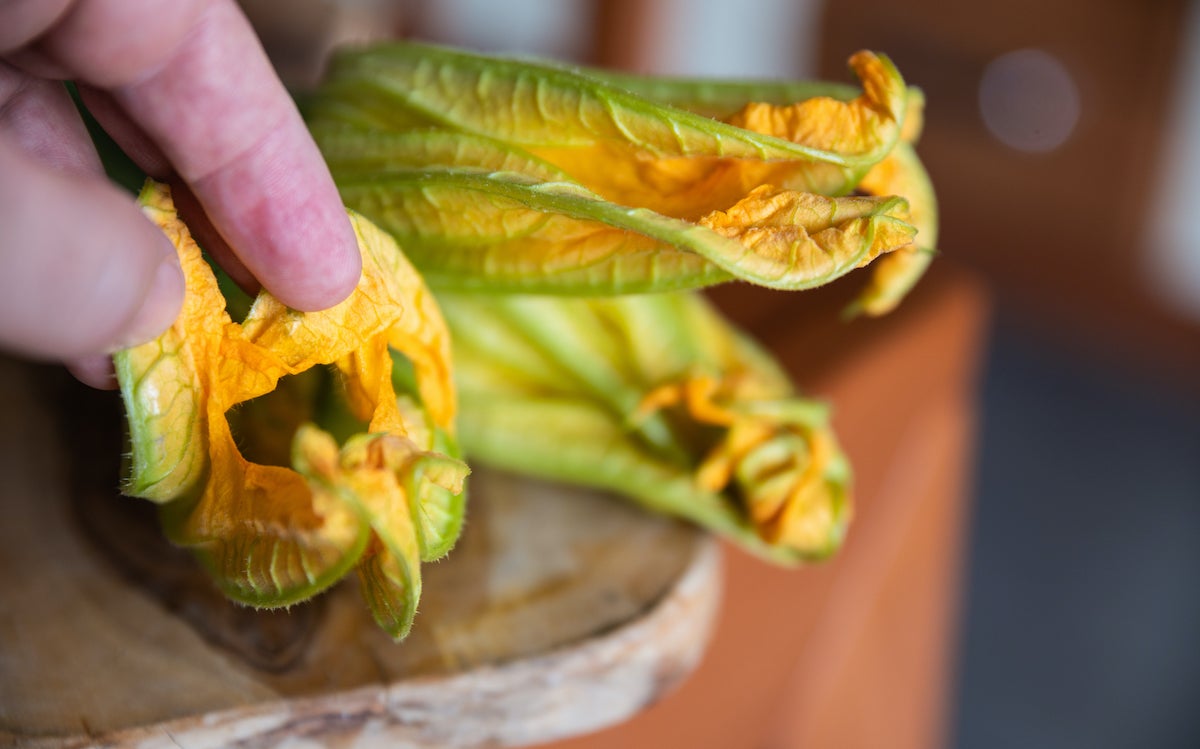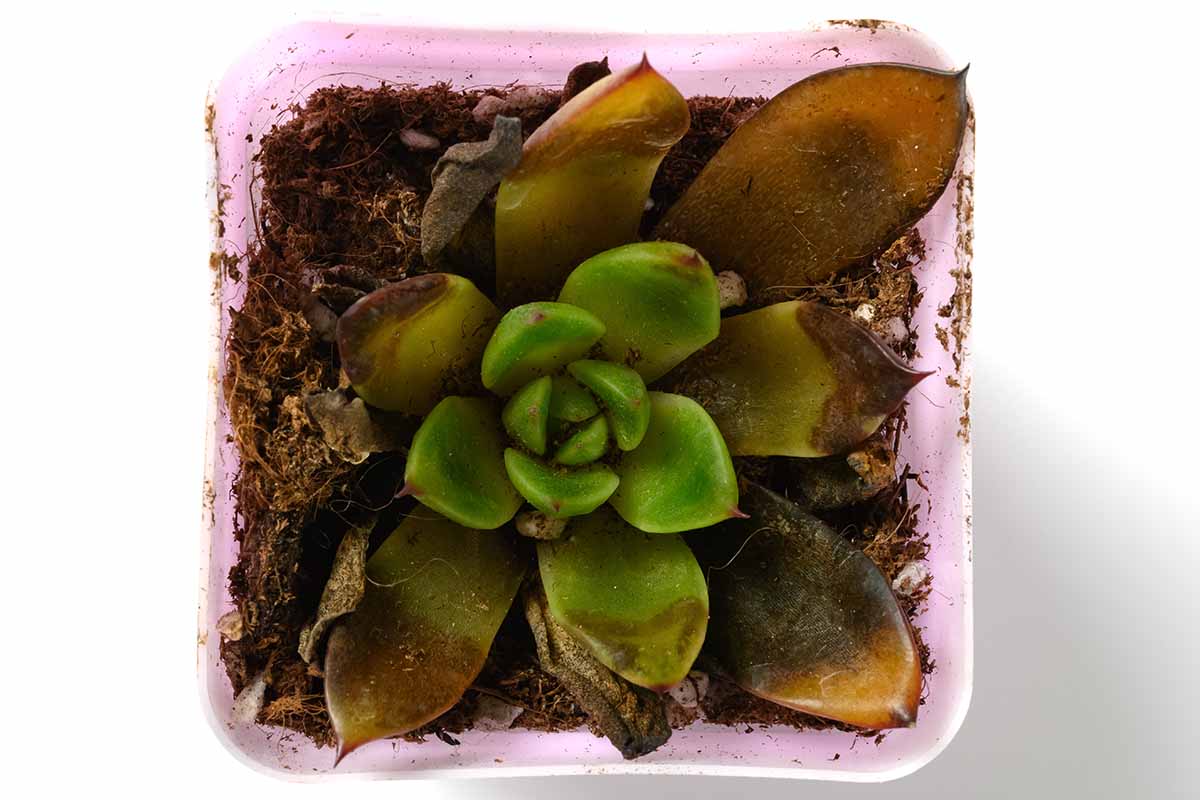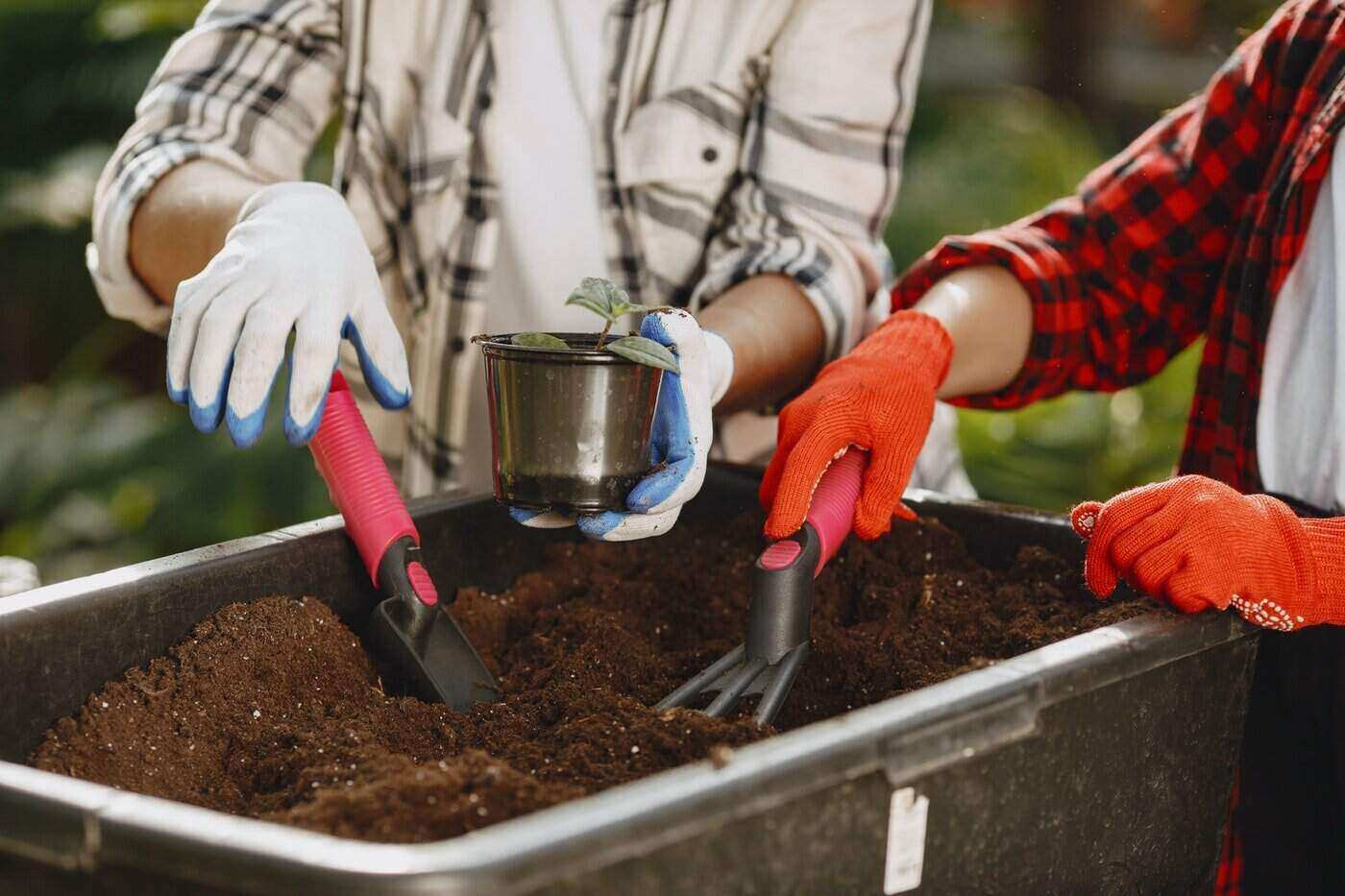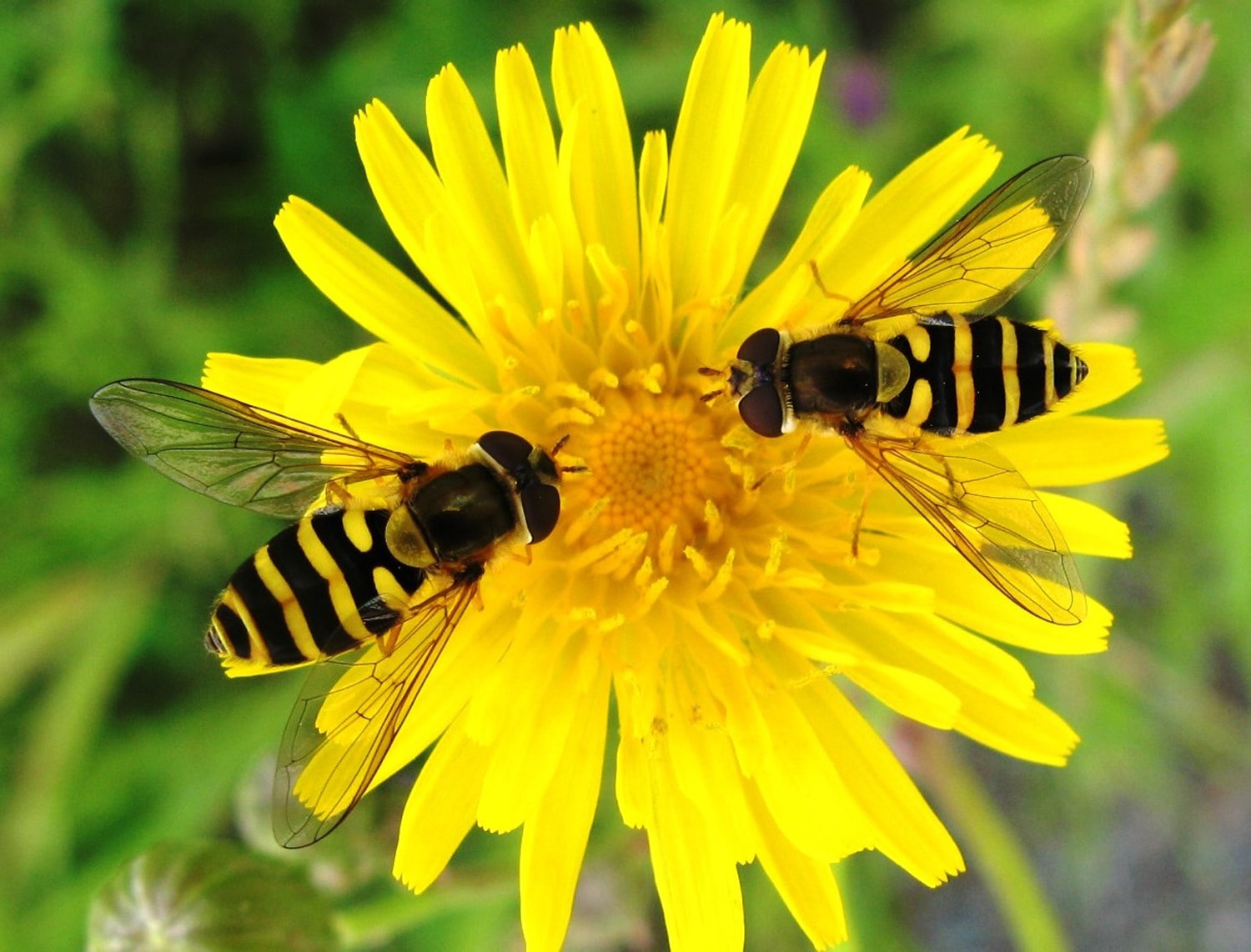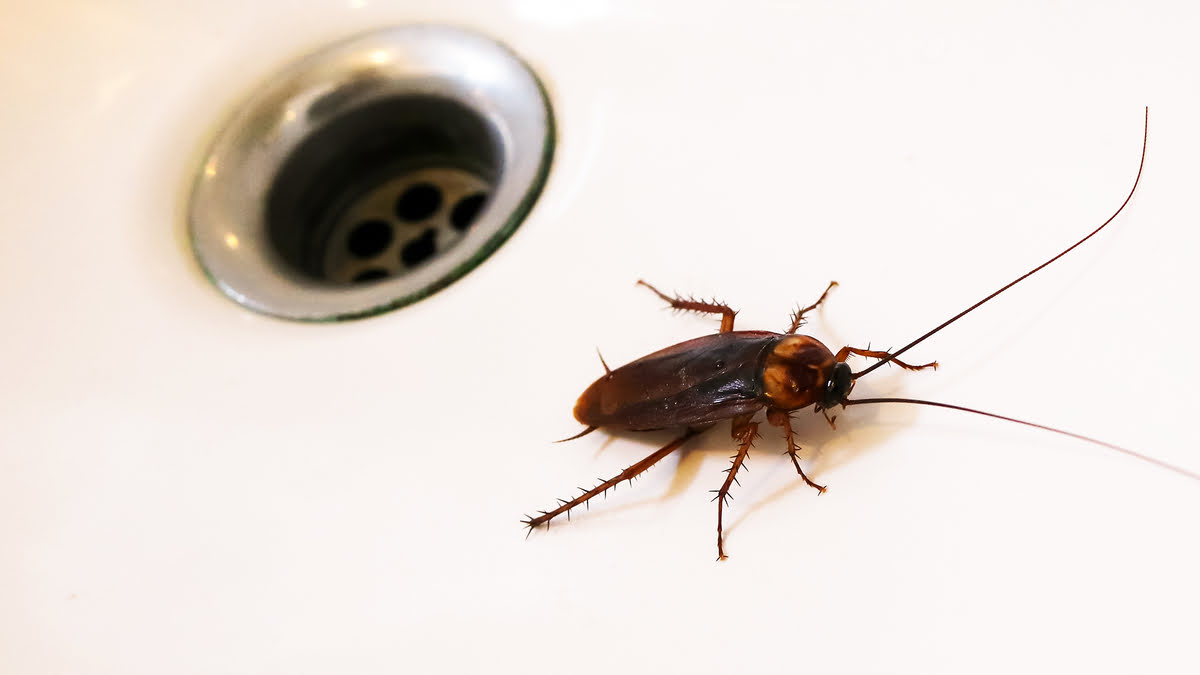Home>Gardening News and Trends>Latest News>Why Do Insects Pollinate Flowers
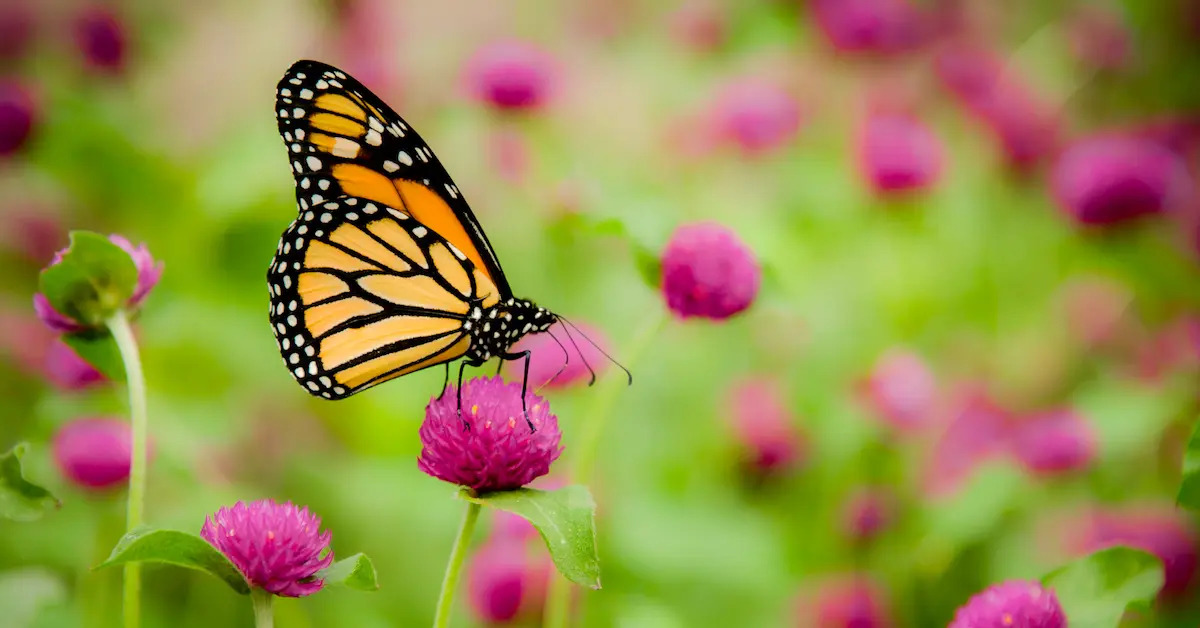

Latest News
Why Do Insects Pollinate Flowers
Published: December 8, 2023
Discover the latest news on why insects play a crucial role in flower pollination. Explore the intricate relationship between insects and flowers and the benefits it brings to our ecosystem.
(Many of the links in this article redirect to a specific reviewed product. Your purchase of these products through affiliate links helps to generate commission for Chicagolandgardening.com, at no extra cost. Learn more)
Table of Contents
Introduction
Flowers are not just pretty to look at; they play a vital role in the ecosystem through the process of pollination. Pollination is the transfer of pollen from the male reproductive organ of a flower, known as the stamen, to the female reproductive organ, called the pistil. While some flowers rely on wind or water to carry out this crucial task, the majority of plants depend on animals, particularly insects, for pollination.
Insect pollination is a fascinating and essential process that ensures the survival and reproduction of numerous plant species. It involves a delicate dance between flowers and their insect pollinators, resulting in a mutually beneficial relationship. As insects visit flowers in search of nectar or pollen, they inadvertently transfer pollen grains from one flower to another, facilitating fertilization and the production of seeds and fruits.
This article will delve into the world of insect pollination, exploring the significance of this process, the different types of insect pollinators, mechanisms involved in pollination, and the benefits of insect pollination for flowers. We will also examine the coevolutionary relationship that has developed between insects and flowers over millions of years, as well as the challenges that insect pollination faces in today’s changing world.
Insect pollination is a complex web of interactions that marvelously highlights the interconnectedness of nature. Understanding its importance and mechanisms not only deepens our appreciation for the natural world but also highlights the need for conservation efforts to protect the intricate relationships between insects and flowers.
Importance of Insect Pollination
Insect pollination is of utmost importance for the survival and reproduction of many plant species. It is estimated that approximately 80% of all flowering plants rely on animal pollinators, with insects being the most common and efficient pollinators. Without insect pollinators, the world would experience a dramatic decline in plant diversity and productivity, leading to devastating consequences for both ecosystems and human populations.
One of the key reasons why insect pollination is crucial is its role in promoting genetic diversity within plant populations. When insects visit flowers and transfer pollen, they facilitate cross-pollination between different plants, ensuring the mixing of genetic material. This genetic variation is essential for plants to adapt to changing environments, resist diseases, and improve overall fitness.
Insect pollination also ensures the production of seeds and fruits, which are vital for the next generation of plants. Fruits and seeds serve as food sources for numerous animals, contributing to the intricate food webs and providing sustenance for both wildlife and humans. Additionally, fruits often have bright colors and enticing aromas, attracting animals to consume them and thereby aiding in the dispersal of seeds to new locations.
Furthermore, insect-pollinated flowers tend to have specific adaptations that make them attractive to their respective pollinators. These adaptations can include bright colors, intricate shapes, and enticing fragrances. Insects have coevolved with flowers over millions of years, developing specialized mouthparts, such as long tongues or strong mandibles, to access the flowers’ nectar or pollen. This mutual dependence and coevolution between insects and flowers have contributed to the incredible diversity of both groups.
It is important to note that insect pollination is not only beneficial for plants but also for humans. Many of our most important food crops, including fruits, vegetables, nuts, and oilseeds, rely on insect pollination for successful reproduction. Insect pollinators contribute to global food security by ensuring high-quality and abundant harvests. It is estimated that insect pollinators are directly responsible for one out of every three bites of food we consume.
Overall, the importance of insect pollination cannot be overstated. It is a crucial ecological process that sustains plant diversity, drives ecosystem functioning, and supports agricultural productivity. Recognizing the value and vulnerability of insect pollinators is essential for our continued appreciation and conservation efforts, ensuring the well-being of both natural ecosystems and human society.
Types of Insect Pollinators
A wide variety of insects have evolved to become effective pollinators, each with their own unique characteristics and adaptations. Let’s explore some of the most common types of insect pollinators:
- Bees: Bees are perhaps the most well-known and important group of insect pollinators. They are highly efficient and have specialized anatomical features, such as branched hairs on their bodies, to carry and distribute pollen. Bees are attracted to flowers with yellow, blue, or purple petals and are known for their role in pollinating many agricultural crops like apples, almonds, and blueberries.
- Butterflies: Butterflies are another group of crucial pollinators known for their beauty and colorfulness. They have long, thin proboscises through which they feed on nectar. Butterflies are attracted to brightly colored flowers with a wide landing platform. They have excellent vision and are particularly adept at pollinating flowers with long, tubular corollas.
- Flies: Flies may not be as glamorous as bees or butterflies, but they play an important role in pollination. Many fly species, such as hoverflies and bee flies, visit flowers to feed on nectar or pollen. They are particularly drawn to flowers that have a strong odor, such as carrion-scented or rotting fruit-scented flowers. Flies tend to have bristly bodies that help carry and distribute pollen.
- Beetles: Beetles are ancient pollinators, with a history that dates back millions of years. They have strong mouthparts that can chew through flower parts to access nectar. Beetles are especially attracted to flowers that have a strong fragrance and large, bowl-shaped structures. While they may not be the most efficient pollinators, they are still important for the reproduction of certain plants, particularly in tropical regions.
- Moths: Moths are nocturnal pollinators, attracted to night-blooming flowers with pale or white petals. They have long proboscises, which they use to access nectar deep within flowers. Moths are excellent long-distance pollinators and play a crucial role in pollinating flowers in undisturbed habitats.
- Wasps: Certain wasps also contribute to the process of pollination. They visit flowers in search of nectar and inadvertently transfer pollen while doing so. Unlike other pollinators, wasps do not possess specialized structures for collecting pollen. However, they can still play a role in the reproduction of some plant species.
These are just a few examples of the diverse range of insect pollinators. Each group has its own preferences, adaptations, and ecological roles, contributing to the overall success and diversity of plant pollination. Understanding the different types of insect pollinators is crucial for protecting and conserving these vital species and ensuring the continued health and functioning of ecosystems.
Pollination Mechanisms
Pollination involves a series of intricate and fascinating mechanisms that enable the transfer of pollen from the male reproductive organs of a flower to the female reproductive organs. These mechanisms are crucial for successful fertilization and the production of seeds. Let’s explore some common pollination mechanisms:
- Wind Pollination: Some flowers have evolved to be pollinated by the wind. These flowers typically produce an abundance of lightweight, small, and dry pollen grains. The flowers lack showy petals and fragrance because they rely on the wind to carry their pollen to other flowers of the same species. Trees like oak, birch, and pine are known for wind pollination.
- Animal Pollination: The majority of pollination in flowering plants is carried out by animals, particularly insects. Animal-pollinated flowers have adaptations to attract their specific pollinators. These adaptations can include bright colors, enticing fragrances, and unique shapes. Insects are drawn to the flowers’ nectar and inadvertently transfer pollen between flowers as they feed.
- Specialized Pollination Mechanisms: Some plants have evolved specialized mechanisms to ensure pollination. One example is buzz pollination, where certain bees, like bumblebees, vibrate their flight muscles at a specific frequency to release pollen from the flowers’ anthers. Another example is the coiled proboscis of certain hawkmoths, which allows them to reach the nectar of long-tubed flowers.
- Self-Pollination: Self-pollination occurs when pollen is transferred from the anthers to the stigma within the same flower or between flowers of the same plant. This mechanism ensures reproductive success even in the absence of pollinators. Self-pollination can result in less genetic diversity compared to cross-pollination, but it can be advantageous in certain environments, such as those with limited pollinator availability.
- Cross-Pollination: Cross-pollination occurs when pollen is transferred between flowers of different plants of the same species. This mechanism promotes genetic diversity and is often facilitated by animal pollinators. Flowers may have structural adaptations to prevent self-pollination, such as having the stigma and anthers at different heights to avoid contact with their own pollen.
These pollination mechanisms ensure the transfer of pollen, enabling plants to reproduce and produce seeds. The diversity of mechanisms is a testament to the incredible adaptability and coevolution between plants and their pollinators. Understanding these mechanisms helps us appreciate the intricate processes that enable life to flourish in the natural world.
Benefits of Insect Pollination for Flowers
Insect pollination provides numerous benefits for flowers, ensuring successful reproduction and survival. The mutual relationship between flowers and their insect pollinators has evolved over millions of years, resulting in a range of advantages for both parties involved. Let’s explore the benefits of insect pollination for flowers:
- Fertilization: The primary benefit of insect pollination for flowers is the facilitation of fertilization. When insects visit flowers in search of nectar or pollen, they transfer pollen grains from the stamen to the stigma, enabling the fusion of male and female gametes. This fertilization process leads to the production of seeds, ensuring the next generation of plants.
- Genetic Diversity: Insect pollination promotes genetic diversity within plant populations. As insects carry pollen from one flower to another, they facilitate cross-pollination, allowing for the mixing of genetic material. This genetic variation is crucial for plants to adapt to changing environments, resist diseases, and enhance overall fitness.
- Increased Seed Production: Insect pollination significantly increases the likelihood of successful seed production. When flowers receive an adequate amount of pollen, fertilization is more likely to occur, resulting in the development and maturation of seeds. Increased seed production ensures the continuation of plant populations and the availability of resources for future generations.
- Promotion of Floral Traits: Insects play a role in shaping the diverse floral traits we observe in flowers. By selectively visiting certain flower types, insects can influence the evolution of flower color, shape, size, and odor. Flowers have evolved specific adaptations to attract their respective pollinators, and this coevolutionary process has resulted in the incredible diversity of floral traits we see today.
- Outcrossing and Avoidance of Inbreeding: Insect pollination facilitates outcrossing, the transfer of pollen between different plants of the same species. This process helps to prevent inbreeding and the negative effects associated with it. Outcrossing enhances genetic diversity, ensuring that offspring have a better chance of acquiring beneficial traits and maintaining the overall health of plant populations.
- Promotion of Pollinator Mutualism: By providing nectar and pollen as rewards, flowers encourage a mutualistic relationship with their insect pollinators. Through this relationship, both parties benefit. Flowers receive pollination services, while insects obtain valuable resources for energy and reproduction. This mutualism has been vital for the success and persistence of both groups in ecosystems worldwide.
The benefits of insect pollination for flowers highlight the intricate and interdependent relationship that exists between plants and their pollinators. By ensuring successful fertilization, increasing genetic diversity, promoting seed production, and shaping floral traits, insect pollination has played a vital role in the survival and evolution of flowering plants for millions of years.
Coevolution of Insects and Flowers
The relationship between insects and flowers is a remarkable example of coevolution, where two species evolve in response to each other over time. Insects have played a pivotal role in shaping the characteristics of flowers, while flowers have evolved to attract and accommodate their insect pollinators. This coevolutionary process has resulted in a remarkable diversity of both insect pollinators and flowering plants. Let’s explore the coevolution of insects and flowers:
Flowers have developed complex characteristics to attract and facilitate efficient pollination by specific insect species. They have evolved an array of strategies to entice insects, including the production of vibrant colors, alluring fragrances, and rewarding nectar. The size and shape of flowers have also evolved to match the mouthparts, tongues, or appendages of their pollinators, ensuring effective pollen transfer. In turn, insects have undergone selective pressures that favor traits that enable them to exploit these floral resources.
One classic example of coevolution is the relationship between certain orchids and specific pollinators like bees or moths. Orchids have intricate flower structures that provide a unique landing platform, guiding the pollinator to the reproductive organs. They often have specialized mechanisms to ensure precise pollen placement on the visiting insect. Meanwhile, the pollinators have evolved specialized behaviors and body structures to access nectar and effectively collect and transport pollen.
Coevolution has also driven the diversification of floral traits and pollinator preferences. For example, some flowers have evolved to produce scent compounds that mimic the pheromones of female insects, attracting male pollinators. Likewise, insects have developed keen visual and olfactory senses to navigate and locate the most rewarding flowers. This ongoing coevolutionary “arms race” between flowers and insects has led to an incredible variety of floral colors, shapes, and fragrances.
The role of coevolution in insect-flower relationships is further exemplified by morphological adaptations. Flowers have developed physical structures such as long tubular corollas to accommodate insects with long tongues or specialized appendages. Conversely, insects have evolved specific mouthparts, such as proboscises or mandibles, to access nectar or extract pollen from intricate floral structures.
However, coevolution between insects and flowers is not always a harmonious relationship. Some flowers have evolved mechanisms to deter or manipulate their pollinators to ensure effective pollen transfer while avoiding excessive resource exploitation. These mechanisms can include producing noxious chemicals or rewarding pollinators selectively to encourage cross-pollination.
The coevolutionary relationship between insects and flowers is an ongoing process that continues to shape the natural world. Through millions of years of interaction and adaptation, these two groups have forged intricate bonds that have resulted in the remarkable diversity and beauty we witness in the natural world today.
Challenges to Insect Pollination
Insect pollination is facing various challenges that jeopardize the delicate balance between flowers and their pollinators. These challenges are largely attributed to human activities and environmental changes, which can have detrimental effects on both the quantity and quality of pollination services. Let’s explore some of the main challenges to insect pollination:
- Habitat Loss: The loss and degradation of natural habitats are a major threat to insect pollinators. As natural landscapes are converted into agricultural land or urban areas, the availability of suitable nesting and foraging habitats for pollinators is reduced. This loss of habitat limits their population size and ability to carry out effective pollination.
- Use of Pesticides: The widespread use of pesticides, especially insecticides, poses a significant danger to insect pollinators. These chemicals can directly harm or kill pollinators, affecting their foraging behavior, reproduction, and overall population health. Pesticides can also indirectly impact pollination by reducing the availability of nectar and pollen or altering the floral traits that attract pollinators.
- Climate Change: Climate change poses numerous challenges to insect pollination. Rising temperatures, altered precipitation patterns, and shifting seasonal cues can disrupt the synchronization between flowers and their pollinators. Changes in flowering times can lead to a mismatch between when flowers are available and when pollinators are active, diminishing pollination success.
- Invasive Species: Invasive species can outcompete native plants and disrupt established pollinator-flower relationships. These invasive plants may provide less nutritious or inferior-quality pollen and nectar, which can impact the health and reproduction of pollinators. Additionally, invasive species can displace native plant species that are reliant on specific pollinators for successful reproduction.
- Genetic Homogenization: The loss of plant diversity due to human activities, such as habitat fragmentation and the spread of monoculture agriculture, can result in genetic homogenization. Reduced plant diversity limits the diversity of floral traits and decreases the availability of suitable resources for pollinators. This can lead to a decline in pollinator populations and a decreased ability to effectively pollinate plants.
- Pathogens and Diseases: Insect pollinators are susceptible to a range of diseases and parasites, including viruses, bacteria, fungi, and mites. These pathogens can weaken pollinators, impair their foraging abilities, and increase mortality rates. In turn, this can impact their effectiveness as pollinators, leading to a decline in pollination services.
Addressing these challenges is crucial for the conservation of insect pollinators and the preservation of the vital ecosystem services they provide. Efforts such as habitat restoration, reducing pesticide use, promoting native plant species, and implementing climate change mitigation strategies are essential to support healthy pollinator populations and ensure the continued functioning of pollination networks.
Conclusion
Insect pollination is a fascinating and essential process that underpins the reproductive success of many flowering plants. The mutual relationship between flowers and their insect pollinators has coevolved over millions of years, resulting in a remarkable diversity of both plant and insect species. Insect pollination not only ensures the production of seeds and fruits but also promotes genetic diversity, shapes floral traits, and sustains ecosystems.
However, insect pollination is facing challenges in the modern world. Habitat loss, pesticide use, climate change, invasive species, genetic homogenization, and diseases are all threatening the delicate balance between flowers and their pollinators. These challenges pose risks to both the quantity and quality of pollination services, with potential consequences for plant populations, food production, and ecosystem stability.
Addressing these challenges requires collective efforts from individuals, communities, governments, and organizations. Conservation and restoration of natural habitats, sustainable agriculture practices, reduced pesticide use, and the promotion of native plant species are all crucial steps towards protecting and supporting insect pollinators.
By recognizing the importance of insect pollination and taking action to conserve pollinators and their habitats, we can ensure the continued health and functioning of ecosystems, promote plant diversity, and safeguard global food security. We must appreciate the intricate and reciprocal relationship between insects and flowers, understanding that their survival and well-being are interconnected with our own.


